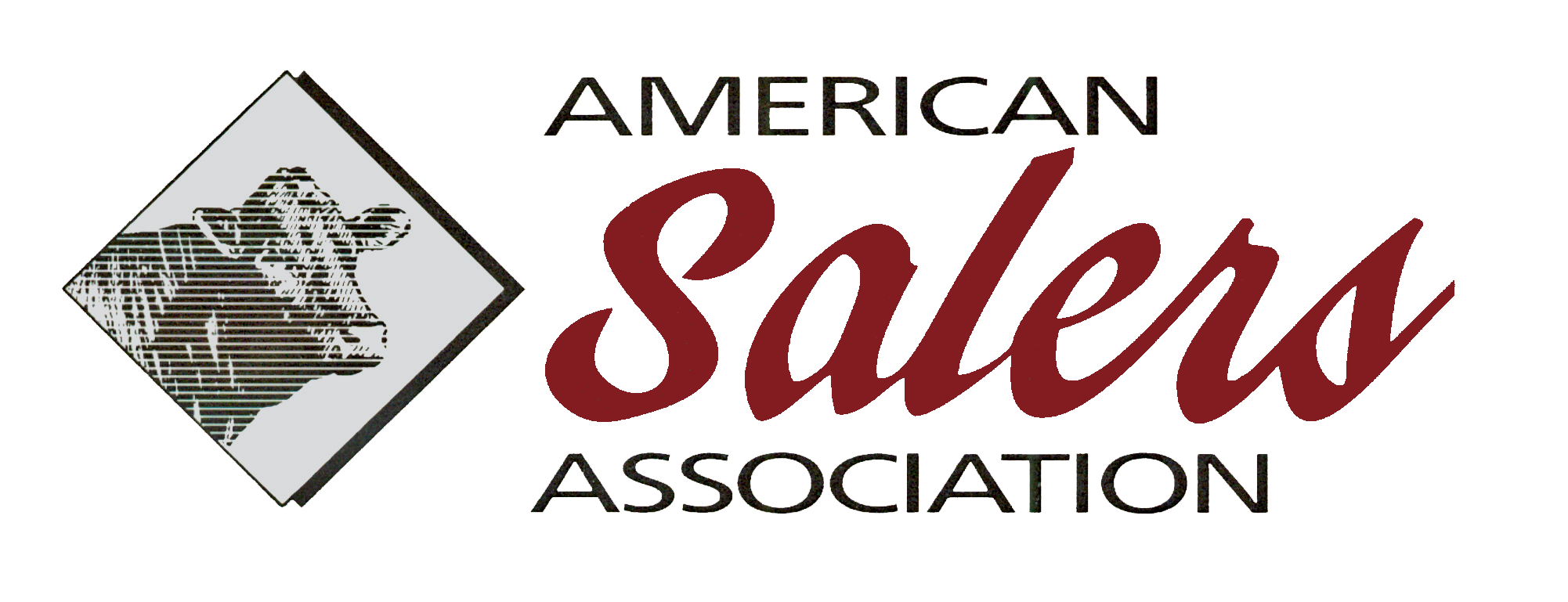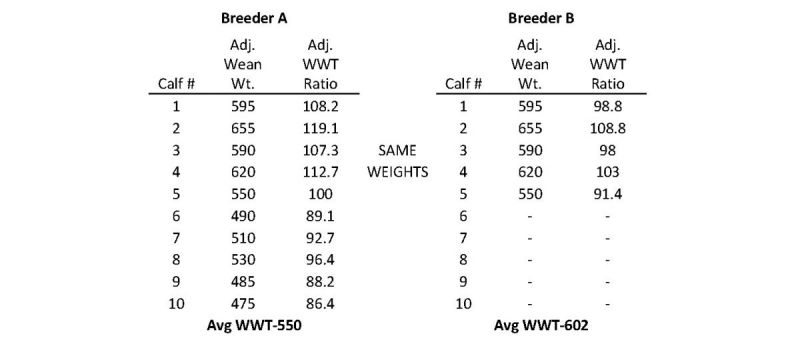It should be every breeder’s goal to work for continued establishment of accurate and uniform procedures for measuring, recording and evaluating Salers performance data. This handout was developed to assist producers in recording accurate performance information and therefore develop more accurate Salers performance figures for all Salers breeders.
Item 1
Total Herd Reporting – Report Complete Information
The most common way breeders can bias data is by reporting incomplete performance information. For example, just reporting information on the calves you register can result in biases on those cattle and their sires and dams. Weights and measurements should be reported on all calves within a contemporary group. The reason for this is simple: reporting only a few, select animals biases information including EPDs. Ratios and indexes are widely used to establish a rank on animals within a contemporary group. When utilizing ratios, one-half of the animals in the herd become below average (<100) and one-half become above average (>100). The following table provides an example of incomplete reporting.
Breeder A reported all animals while Breeder B reported only the top 50 percent of the calves in that herd, thus biasing the ratios. In the Breeder B example, the EPDs would be biased downward for those animals ranking below 100, calves 1, 3 and 5, while in the Breeder A example, the same animals 1, 3 and 5 would not be biased as the complete contemporary group, all 10 calves, were entered. The biases not only affect the individual calf, they also affect the EPDs for both the dam and sire and the parents of each.
Item 2
Contemporary Groups
A contemporary group is a group of cattle of similar age that are of the same sex and have been raised in the same location, on the same feed and pasture (management group) ASA automatically breaks contemporary group for the following reasons:
- Sex Bulls, steers and heifers are in a separate contemporary group
- Weight Date Each weight date is a separate contemporary group. For example, Sept. 8 and Sept 10 would be in different contemporary groups.
- Animals born in different herds and different seasons are in separate contemporary groups.
Management Code/Group
In addition to the automatic separation of contemporary groups as listed above, producers can and should, if the right conditions exist, consider more contemporary group designations. Examples may include:
- An injured or sick calf or dam.
- Cows on irrigated pasture versus cows on dryland pasture.
- Two-year-old dams versus mature cows – if managed differently.
- Any other different type of management condition which may cause the calf weight to differ from one group of cows versus another.
Item 3
Calf Information
Birth Weight – Birth weight information should be actual weight taken within 24 hours of birth.
Weaning Weight – Take weaning information when the majority of calves fall between 160 and 250 days of age. Calf weights are adjusted to 205 days to allow weaning weights to be comparatively evaluated. Do not weigh calves individually on day 205. Try to keep contemporary groups as large as possible. If bulls were castrated at weaning time, still turn in the sex of the calf for weaning comparisons as a bull. Calf sex, in this case should be changed to a steer at yearling time. Calf docility score and hip height can also be reported at this time.
Yearling Weight – Yearling weights should be taken between 300 to 450 days of age in order to be adjusted to 265 days of age. Some animals may have been disposed of prior to the yearling stage and therefore will not have yearling information. However, it is still important to report all yearling weights on animals still present in the herd. Other yearling performance includes: scrotal circumference, hip height, pelvic height and width and updates on docility score.
Item 4
Cow Information
At calf weaning time, if facilities are available, cow measurements including height, weight and body condition scores can be taken. Again, record actual weights. Hip height measurements can be taken in inches by measurements marked on the processing chute as the cow walks through. Measure directly over the hip bones. Contact ASA for pictures referencing specific body condition scores.
Item 5
Common Errors
Several common errors, some previously mentioned, catch producers off guard and can have a huge influence on performance programs.
- Incomplete reporting
- Not placing sick or injured calves into separate contemporary groups
- Not splitting groups of cows in different groups due to pasture differences
- Failure to recognize how different environmental conditions such as drought can effect different age groups of females (two-year-olds versus mature cows)
- Reporting bulls as steers when they were actually still bulls at weaning.


